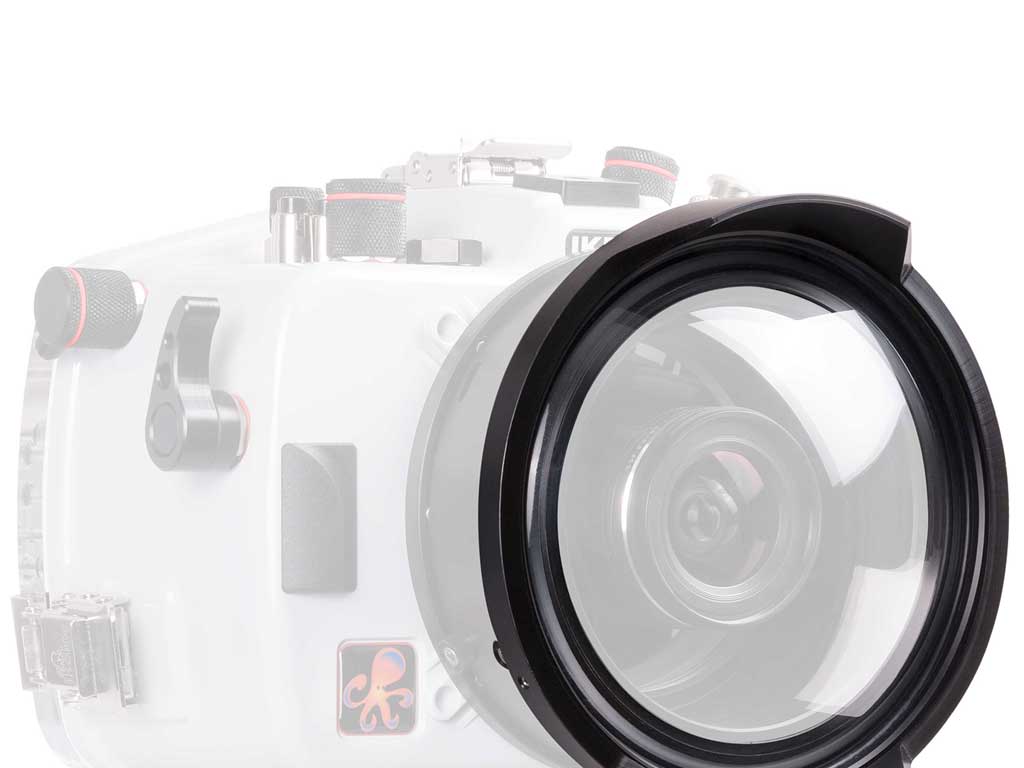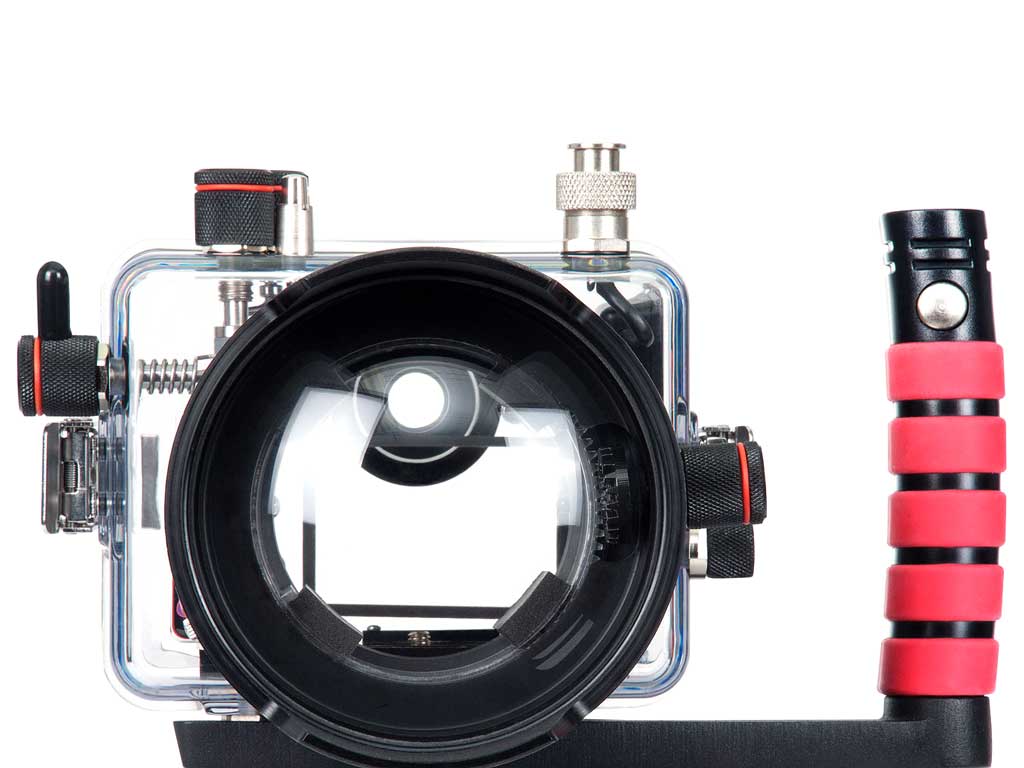How do I find the right port?
We have evaluated most popular lenses, provided they are well suited for use underwater. Our port recommendations are available in the following lens port charts. Please check the webpage for your housing to determine which mount your housing features.

Click on one of the links below to download the port chart PDF:
DL Port System for Panasonic GH5
FL Port System for Olympus, Panasonic, and Sony DSLR
FL Port System for Panasonic GH3/GH4
FL Port System for Sony A7-Series
FL Port System Standard Fixed Length Ports (Obsolete)
What is the difference between a dome port and a flat port?
Flat and curved windows provide the same image above water, but act very differently under water. Flat ports bend light rays and magnify the resulting image. You can see this effect when you look through your dive mask: everything appears larger. This makes flat ports ideal when using standard or macro lenses.
A curved window, like a dome port, corrects for this bending effect under water. The result is a true image with no magnification. This makes dome ports ideal for wide angle and zoom lenses.
What is the best lens for under water?
We're glad you asked that! Not all lenses work well under water. You will need to get very close to your subject for your image to have color and clarity, so avoid telephoto lenses and lenses with a long zoom range. A kit lens like 18-55mm or 18-70mm can be an OK place to start. If you're like most underwater shooters, once you get more serious you will want a wide angle or fisheye lens, like the Tokina 10-17mm Fisheye, and a macro lens, like a 100mm or 105mm.
What is a +4 diopter?
A close-up lens, or diopter, is an accessory piece which threads onto the front of your DSLR lens. It alters (shortens) the minimum focus distance of your lens, which may be necessary for your lens to focus underwater behind a dome port.
+4 close-up lenses are available online or through your local camera store. They come in a variety of thread sizes, so you will need to know the filter thread size of your lens. The front of the lens will often reference its filter thread size, often in the format Ø 52mm, Ø 67mm, etc.
Can I remove small scratches from my dome port?
We find that many light exterior scratches will fill in with water and remain invisible unless shooting into direct light.
If scratches are becoming obtrusive, it may be possible to polish them out. NOVUS produces some of the best plastic polishes we've found. We offer it in sets of three grades in either single use packets or 2 oz bottles for the removal of light scratches from acrylic dome and flat ports. Results will vary depending on depth of scratches and method of applying the polish.
Where scratches are too deep to be polished, return the port to Ikelite for a reasonably priced repair or replacement.
Can I use Rain-X on my port?
Use at your own risk - we strongly recommend that you do not. Rain-X and other similar products are likely to cause crazing or cracking of the port and/or housing. In some cases, we've seen Rain-X cause enough damage to result in leaking.












